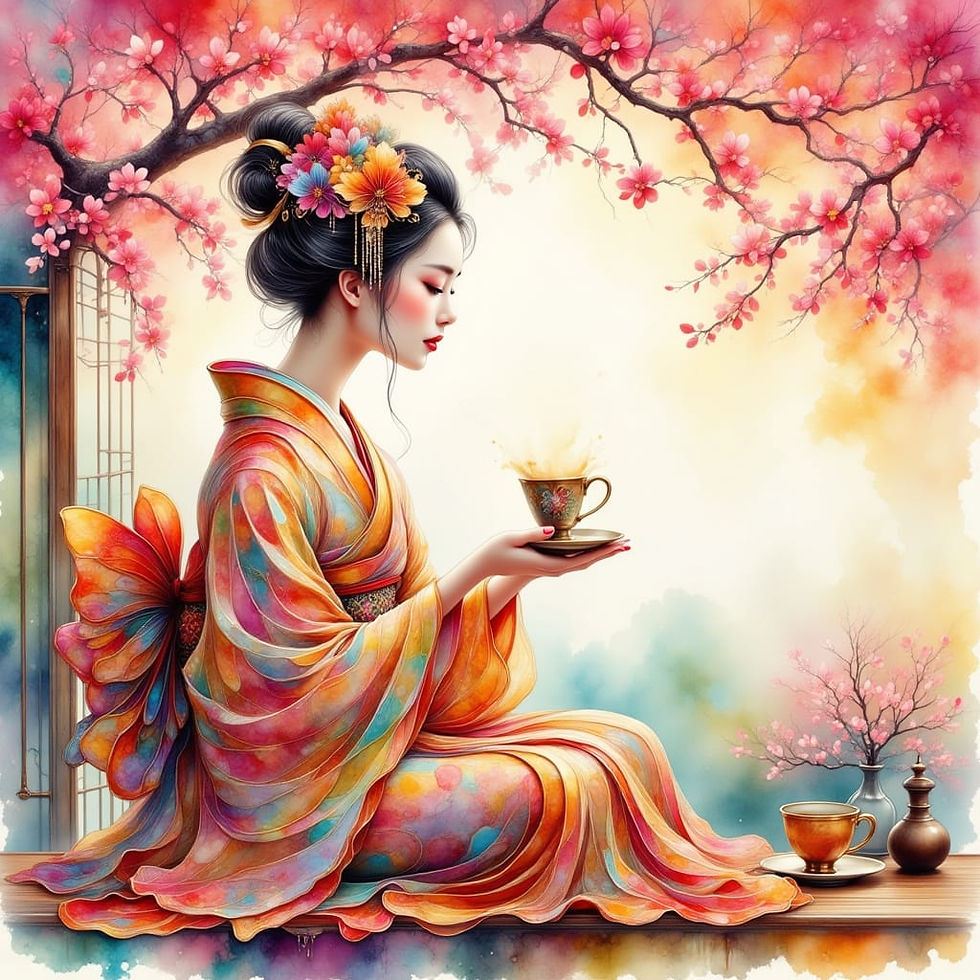The Fascinating Journey of Hiragana: Unraveling Its Origins and Evolution Through Time
- Larisa Ion
- May 20
- 4 min read
Hiragana is one of the essential components of the Japanese writing system, capturing the hearts of language enthusiasts and scholars alike. Its fluid curves and elegant strokes serve a practical purpose, but they also tell a compelling story of cultural evolution and linguistic adaptation. In this blog post, we will explore the origins of hiragana, its development, and its significance in today’s world.
The Birth of Hiragana
The origins of hiragana can be traced back to the 8th century during the Heian period in Japan. At that time, the Japanese used kanji, Chinese characters, to write their language. However, the complexity of these characters made written communication challenging for many people.
To overcome this barrier, a simplified script emerged. Derived from the cursive forms of kanji, this new writing style was called "onnade," meaning "women's hand." This script was primarily used by women, who often lacked formal education in kanji. The birth of hiragana marked a crucial turning point, giving rise to the first fully phonetic writing system in Japan, which allowed more people to participate in literary and social discourse.
For example, the earliest known texts in hiragana are believed to be “The Tale of the Bamboo Cutter” and poems written by the noblewoman Sei Shonagon, showcasing the script’s initial role in poetry and storytelling.
The Evolution of Hiragana
As time moved on, hiragana continued to evolve. By the late 9th century, the script began to resemble what we recognize today. This evolution was largely driven by the need for a practical writing system that complemented the rigidity of kanji. Hiragana enabled greater fluidity in writing and became accessible to a wider audience.
During the Heian period, notable literary works, such as The Tale of Genji by Murasaki Shikibu, were composed using hiragana. This not only showcased the script's versatility but also cemented its importance in Japanese literature. Ultimately, what began as a women’s writing system gained recognition and legitimacy, leading to its inclusion in official documents and literature.
It is estimated that by the 12th century, approximately 70% of literary works utilized hiragana, highlighting its growing acceptance and significance in Japanese society.
Hiragana in the Modern Era
By the Edo period (1603-1868), hiragana was well-established in the Japanese writing system. It coexisted with kanji and another phonetic script, katakana, which was developed to transcribe foreign words and scientific terms.
Today, hiragana is taught from an early age in Japan and is fundamental to literacy. This script has several roles, from indicating grammatical functions to providing phonetic readings for kanji characters. For instance, children’s books often use hiragana to help young readers grasp basic language skills, while kanji dictionaries incorporate hiragana readings to assist learners.
In fact, education statistics show that nearly 98% of Japanese students are proficient in reading hiragana by the time they finish elementary school, underscoring its crucial role in the nation's educational framework.
The Significance of Hiragana in Japanese Culture
Hiragana is not merely a communication tool; it is a vital part of Japanese culture. The simplicity and beauty of the script have influenced various art forms, from calligraphy to poetry. For example, many contemporary calligraphers embrace hiragana for its artistic potential, creating visually stunning pieces that reflect the beauty of the language.
Moreover, hiragana symbolizes a sense of identity for the Japanese people. It represents cultural heritage that has endured over the centuries while adapting to modern needs. This accessibility has opened the doors for countless individuals to engage with literature, poetry, and manga, deepening their appreciation of Japanese culture.
Approximately 80% of modern Japanese literature incorporates a mix of hiragana and kanji, demonstrating how interconnected these writing systems are.
Learning Hiragana: An Enthusiastic Journey
For those eager to learn hiragana, the journey is both exciting and rewarding. With only 46 basic characters, the script serves as a perfect introduction to Japanese writing. Mastering hiragana is essential for understanding more complex scripts like kanji and katakana.
Engaging in immersive practices can facilitate learning. For instance, reading children’s books or practicing handwriting helps reinforce memory. Flashcards can be particularly effective, as studies show that repetition boosts retention rates by up to 80%. Many language apps and online resources offer engaging methods to practice hiragana, making the process enjoyable and accessible.
The Future of Hiragana
Looking ahead, hiragana will continue to play a crucial role in the evolution of the Japanese language. With advancements in technology and globalization, its practical applications will likely expand. The digitization of text has made learning hiragana more accessible than ever, allowing new generations to connect with their heritage.
As Japan balances tradition and modernity, hiragana remains a significant reminder of the country’s rich linguistic history. It embraces changes while holding onto its essential qualities, making it a bridge connecting past and future.

A Lasting Legacy of Hiragana
The journey of hiragana reflects the resilience and adaptability of the Japanese language. From its beginnings in the Heian period to its vital role in modern literacy, hiragana showcases the beauty of linguistic evolution. For those interested in this script, appreciating it means exploring a rich cultural history that continues to thrive. Whether you are a newcomer or an experienced learner, immersing yourself in hiragana offers an enriching experience that connects you to Japan and its vibrant community.




Comments